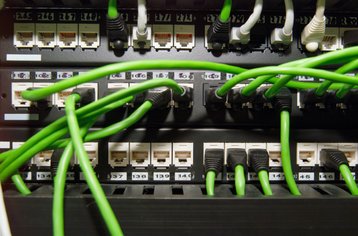The end is near for 2015 and strategies are being developed by enterprises, colocation providers, and web giants alike for the next great developments in IT. Will 2016 be the year that cloud kills the data center? Will the race to the edge continue? Who is happy that the term “Fog Computing” never caught on?
On Wednesday I’ll reveal my fearless predictions for 2016, but first let’s take a look back at predictions for 2015 and see how the market performed.
1. Cloud won’t doom data centers
Grade: A
The market found that colocation data centers and cloud are complementary, and that FUD (fear, uncertainty, doubt) alone will prevent radical shifts in IT. Enterprises are adopting a hybrid model of in-house and colocation data centers along with strategic cloud implementations.
2. Warmer data centers
Grade: B
The prediction was that temperatures would inch higher, but not substantially overall. For the most part, this proved out. However, colocation providers are adapting to offer different products for those that are willing to operate at higher temperatures.
3. TCO doesn’t drive design
Grade: A+
A frustratingly, irritatingly accurate prediction that total cost of ownership (TC) would continue to be ignored by most of the industry. The use of capex as THE decision making metric continues to baffle when factors such as accelerated depreciation, energy efficiency, and incentives paint such a compelling financial picture for change.
Every other layer in the IT stack has adopted a use-based pricing model - except the data center.
Jason Ferrara, Chief Marketing Officer, Aligned Energy
4. Data center services commoditization
Grade: A
Consider the data center services sector commoditized. Many providers would argue to the contrary, but in the eyes of the customer, there is very little differentiation between providers. The arrival of Aligned Data Centers that offers a pay-for-use model similar to cloud is strong proof.
5. Flat data center density
Grade: B
The prediction that power densities would remain flat and far below the capabilities of today’s IT was correct. That said, positive trends toward the end of the year give hope that this will change. One example was a production environment for an institution of higher education averaging nearly 5kW per cabinet, which isn’t earthshattering, but certainly higher than the industry average in years past.
6. Greenpeace influences data center decisions
Grade: C
Although Greenpeace continues its name and shame campaign by updating the naughty and nice list annually, I think it is roundly ignored as a result of green fatigue. Although Google and Microsoft continued their investments in renewable energy and were joined by Amazon and a few colocation providers, these were business decisions based on economics, risk mitigation, and brand value.
7. Server huggers drive demand
Grade: A
Never underestimate the strength of the server hugger psychological phenomenon. Some end-users are branching out and locating data centers where it makes the most economical sense. Yet the vast majority continues to keep their servers on a short leash, close to home. This may be further enabled by the availability of edge data centers.
Data runs the planet, which is why Switch SUPERNAP wants to ensure data doesn’t ruin the planet.
Adam Kramer, Executive Vice President of Strategy, Switch
8. Renewable energy: more talk than action
Grade: D
Although the web giants did continue their investment in renewables, the adoption by colocation providers such as Switch, Equinix, and others was surprising. As is typical, Switch took it to the next level by building its own solar farm instead of simply buying renewable energy certificates. As highlighted earlier, it was for sound reasons, but I missed the boat on the rate of adoption in the market as a whole.
9. Transactive energy management gains traction
Grade: F
A big miss for 2015. The market for on-site power production, dispatchable power, and other forms of transactive energy management appeared positive late in 2014. But the discussion died a quiet death during 2015. Perhaps it is the availability of cheap natural gas? Or the failure of fuel cells to reach an economical price point? But, there was little movement by data centers toward this tactic.
10. Green fatigue grows
Grade: A
Green fatigue reached an all-time high in 2015. There were few if any “greening the data center” panels at conferences this year. The market has turned to simply making good business decisions and implementing the tactics that make sense.
On the whole, the predictions for 2015 fared well, with a couple of notable failures. On Wednesday, we’ll turn our attention to the future and discuss what is in store for the data center market in 2016.
Ron Vokoun DBIA, LEED AP BD+C, is director of mission critical design, at RK Mission Critical
If you would like to learn more about solar power register now for our “Powering Big Data with Big Solar” webinar.










